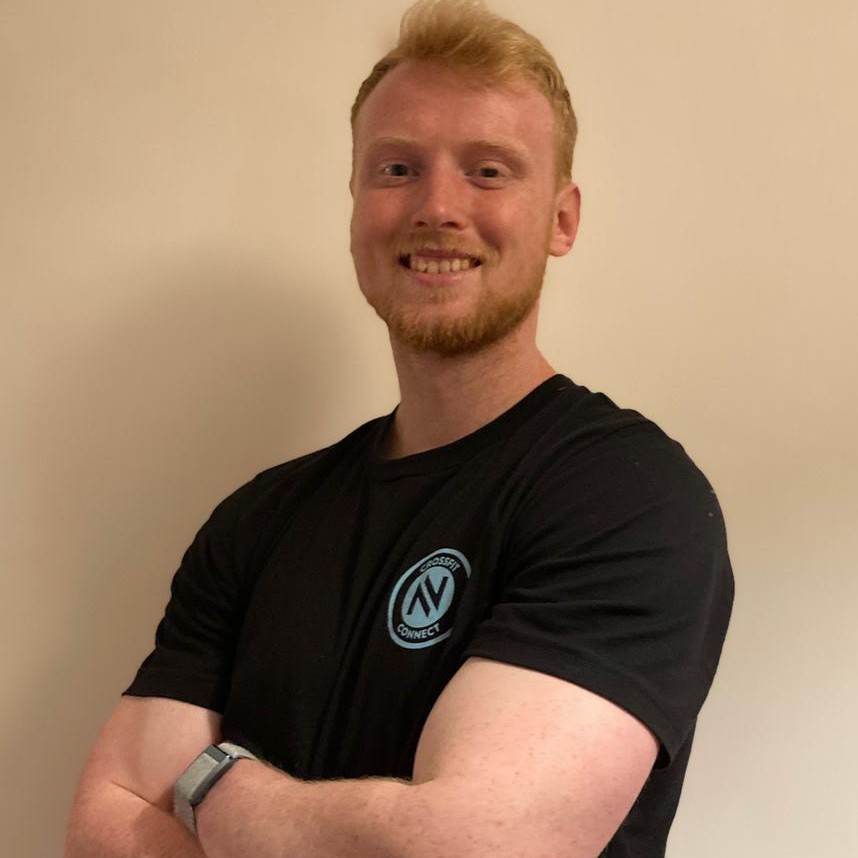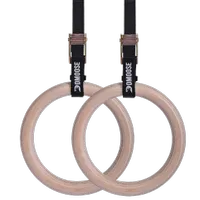This $30 Training Tool Helped Me Get In The Shape Of My Life Over Lockdown—Here Are Four Reasons You Should Consider Investing
I cannot recommend gym rings highly enough and you can add a set to your home gym for less than $30 with this Black Friday deal

I loved working out before the pandemic, so when gyms shut I had to find a new way to train. With limited funds at my disposal, I spent about $40 on one simple fitness tool. In the months that followed, it helped me to get in the best shape of my life.
The equipment was a set of gymnastic rings, and today you can pick up a similar set from DMoose for less than $30. If you’re looking to build strength and muscle without a gym membership, I can’t recommend them highly enough.
DMoose gymnastic rings: was $45, now $27 at DMoose
Save $18 There are few training tools that can transform your exercise regime for so little, but thanks to this DMoose Black Friday deal gymnastic rings are one of them. I picked this set because, like ones I’ve used previously, it has wooden rings rather than plastic ones for better grip. It also has adjustable clasped straps so you can hang them from pretty much any sturdy branch, soccer goal, basketball hoop or similar.
Four Reasons To Consider Training With Gymnastic Rings
1. It’s Fun And Challenging
The biggest fitness-related problem for me during lockdown was workout monotony and gymnastic rings solved this. The closing of gyms threw my usual strength training-centric morning routine out of whack, and in the initial lockdown I tried to fill this void with bodyweight workouts.
The reality? Unweighted squats, burpees, push-ups and lunges galore in my living room. Very soon, I was bored.
Looping a set of gymnastic rings around a sturdy branch at my local park livened things up immediately. I dived into calisthenics videos and online articles for inspiration, and quickly found new exercises to try, from L-sit holds to archer pull-ups to the oddly-named “skin the cat” (Google it, it’s not as strange as it sounds).
This not only made my training more fun and varied, it also meant I was able to perform more difficult exercises in sets that fell within the standard muscle-gain rep range of 8-12, rather than the monster sets of push-ups I’d been doing.
When gyms reopened and I manhandled a barbell for the first time in months, I found my upper-body strength had improved slightly.
2. You Can Train Your Back Muscles Without Weights
If you’ve ever tried to train your back muscles without any equipment, you’ll know where I’m going with this point. At the start of lockdown I didn’t have any weights in my one-bed abode, so my efforts to get a good back pump included a lot of Superman pull-ups, single-arm rows with an Ikea bag filled with rocks, and performing precariously supported pull-ups on a towel wedged around the top of my bathroom door.
Thankfully, gymnastic rings came to the rescue, offering a safer, more effective alternative. There are any number of row and pull-up variations you can do, as well as face pulls and biceps curls, as part of a comprehensive weights-free pull session.
3. They Create Different Ways To Measure Progress
During my early years of lifting, my goals in the gym were simple: lift heavy, build muscle, look good. Success was measured in the mirror.
As the years went by, I started wanting more from my workouts. I’d flirted with powerlifting and was fascinated with the idea of CrossFit workouts and hybrid training before lockdown, so when COVID-19 brought everything to a halt, I took the chance to change my approach.
I’d take the rings to a running track, hang them from a nearby tree then alternate between exercises like pull-ups, dips, toes-to-rings and running intervals. These combined to form metcon workouts that challenged my heart, lungs and muscles. I also dedicated sessions to developing skills on the rings, working towards “skin the cat” and my ultimate goal, the strict ring muscle-up.
Where the loss of lifting weights each morning had left my mood flat, I felt elated and energized after these types of workouts. I also mapped my progress against a multitude of factors, rather than just aesthetics. Yes, I was able to build muscle, but I was also enjoying pushing my body’s limits and finding out what it was capable of. Could I beat my previous biggest set of strict ring dips? Was I able to finish a metcon faster? Had the quality of my movements improved?
Having multiple goals meant my motivation levels soared and I never missed a scheduled morning workout during this period.
4. They Provide A Different Way To Train Your Legs
Ah, leg day. Start with a heavy compound exercise (more often than not the barbell squat) then work your way through a cluster of isolation moves like leg curls and extensions until you lose the ability to climb stairs. I’m sure this sounds familiar to many of you. Only, my local park didn’t have a barbell, or a leg extension machine.
There are ways to strengthen your legs without these things though, if you do want to exercise outside the gym or take your regular training alfresco. I started by hitting high-volume leg workouts, though after buying gymnastic rings I changed tack.
Instead, I focused on single-leg exercises like the pistol squat, with ring-supported pistols providing a handy stepping stone to help me learn the full movement. The rings also allowed me to perform hamstring curl variations, and play with the tempo of these exercises to make them more challenging.
A leg day at a fully-stocked gym is still my go-to, and I was excited to go back to the squat rack as soon as gyms reopened. However, I was still impressed that the gymnastic rings were able to help me train my lower body.
Sign up for workout ideas, training advice, reviews of the latest gear and more.

Harry covers news, reviews and features for Coach, Fit&Well and Live Science. With over a decade of training experience, he has tried everything from powerlifting to gymnastics, cardio to CrossFit, all in a bid to find fun ways of building a healthy, functional body.

